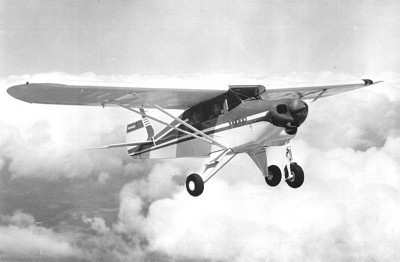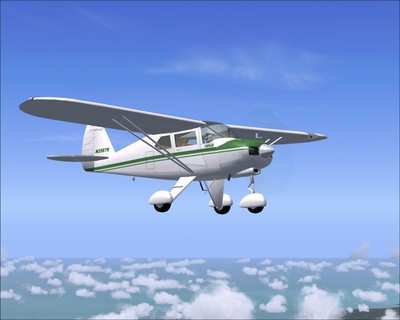Mon, May 30, 2011
Quick Descent And Emergency Landing Averts Tragedy
I don't have to tell you that one of the true nightmares of any
pilot's existence is dealing with inflight fire. In the case of a
mostly fabric aircraft of elder lineage, the problems can get out
of hand in a heartbeat. This pilot did what he should have done...
got the bird down before an inflight fire consumed too much of the
aircraft to permit continued flight. Good work...

NTSB Identification: CEN11LA350
14 CFR Part 91: General Aviation
Accident occurred Friday, May 20, 2011 in Frederick, OK
Aircraft: PIPER PA-22-160, registration: N8957D
Injuries: 1 Serious,1 Uninjured.
This is preliminary information, subject to change, and may
contain errors. Any errors in this report will be corrected when
the final report has been completed.
On May 20, 2011, at 1513 central daylight time, N8957D, a Piper
PA-22 airplane, was destroyed after the pilot made a forced landing
to a field due to an in-flight fire. The airplane continued to burn
on the ground and was consumed by fire. The private pilot was
seriously injured and the passenger was not injured. The airplane
was owned and operated by the pilot. Visual meteorological
conditions prevailed and no flight plan was filed for the local
flight conducted under 14 CFR Part 91.

File Photo
According to the pilot, about 20 minutes after he departed he
was maneuvering at an altitude of 600 feet when he began to feel
his feet getting hot. He thought it might have been the cabin heat,
but the heat was getting more intense and the cockpit began to fill
with a gray/bluish colored smoke. The pilot then observed black
smoke near his left foot and flames, which he attempted to try and
stomp out. The pilot made a forced landing to a muddy field where
he and his passenger were able to exit the airplane before it was
rapidly consumed by fire.

File Illustration
The airplane was examined by an inspector with the Federal
Aviation Administration(FAA)the day after the accident. He stated
that the entire fuselage, tail section, right wing and the inboard
section of the left wing were consumed by fire. The engine
compartment also sustained extensive fire damage.
More News
Airplane Bounced About 3 Ft Then Touched Back Down And Then, With No Brakes Applied, The Airplane Began Veering To The Left Analysis: The pilot entered the airport traffic pattern >[...]
Aero Linx: British Microlight Aircraft Association (BMAA) The primary focus within all aviation activity is SAFETY. In all aspects of our sport SAFETY must come first, whether it b>[...]
From SnF25 (YouTube Edition): William Wynne Builds Practical Aircraft Engines on the Corvair Platform Seeking an affordable alternative to the traditional aircraft engine options, >[...]
How To Get A Story On Aero-TV News/Feature Programming How do I submit a story idea or lead to Aero-TV? If you would like to submit a story idea or lead, please contact Jim Campbel>[...]
From 2023 (YouTube Edition): Bridge of CiES CiES Inc. is a Bend, Oregon-based designer and manufacturer of modular embedded aircraft systems and sensors. The company’s fuel-l>[...]
 NTSB Final Report: Aviat A1
NTSB Final Report: Aviat A1 ANN's Daily Aero-Linx (07.08.25)
ANN's Daily Aero-Linx (07.08.25) Classic Aero-TV: Fly Corvairs Reliable Engine Alternative
Classic Aero-TV: Fly Corvairs Reliable Engine Alternative ANN FAQ: Contributing To Aero-TV
ANN FAQ: Contributing To Aero-TV Classic Aero-TV: CiES Fuel-Quantity and e-Throttle Systems Praised
Classic Aero-TV: CiES Fuel-Quantity and e-Throttle Systems Praised





